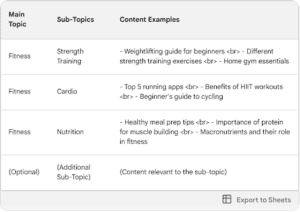
Everything you need to know about Content Siloing

Content siloing is part-and-parcel of any salient long-form content strategy. Helping you attract new users and building a bank of easily-navigable pieces, a silo blends great long-form content that strives to get rankings.
In this guide, our SEO experts are here to help you make sense of this method. From what it is, how it works and how you can use it in your strategies – we’ve got you covered.
What is content siloing and why should you be using it?
If your pages need to come up top in the SERPS for broader, longer, and more niche terms – then your website has to have enough content behind it to appear relevant to search engines.
But it’s not enough to just have the words. Ideally, content has to be organised well – like a library system – so your users can bounce from topic to page to find exactly what they need.
That’s where siloing comes in. Siloing essentially ‘groups’ related pages together, helping you cement a keyword strategy through smart linking and structuring, categorising different content themes, and making it easy for Google to contextualise your website as a whole.
SEO purposes
Siloing for SEO purposes is all about order. Specifically, it’s a classic way to help search engines and visitors understand subject-specific content on your website. Like the chapter of a book or a genre of music, you are serving exactly up to the useful content your user expects – something search engines are prioritising as of late.
But it also has a huge impact on your SEO activity, too. Search engines assign these pages keyword relevancy within their index based on the content of a page, as well as the rest of a website’s supporting content. If everything’s nicely siloed, that’s a big Thumbs Up for Google.

As we just discussed, search engines love websites that are easy to use and understand. Frankly – who doesn’t? By using a siloed structure, visitors can deftly navigate your website and find the information they need quickly, keeping them engaged, reducing bounce rate and even encouraging them to explore related content within a silo.
But that’s not all. By grouping thematically relevant content using a silo method, your strategy sends signals to Google about your website’s expertise in specific areas – especially niches. The result? Higher rankings for relevant keywords.
At a glance
- Enhanced SEO
- Improved User Experience
- Establishes Topical Authority
How to create effective silos
So, how do you create a silo – and do it well?
Firstly, identify your core topics by brainstorming the categories and themes across your website. This is essentially laying the groundwork for your silo.
From here, conduct thorough keyword research to help you get a grip on user intent and relevant terms – this will boost your optimisation and assist in your planning. Then, get to work creating useful, high-quality content like:
- Articles
- Infographics
- Videos
- Blog posts
Once you’ve got a solid stock of content to form your silo, it’s time to interlink! Interlinking relevant content pieces together is a great way to point users in the right direction, helping them discover more about a particular topic. As such, your silo’s SEO is greatly improved, as is its overall structure.
The Embryo content silo checklist

Now you’ve got the basics, here are some do’s and don’ts to keep in mind as you start effectively siloing your content.
Avoid Silo Isolation
While silos keep content organised, some interlinking between silos can be beneficial, especially for broader topics with natural connections.
Focus on User Experience
First and foremost, content siloing should always put your users first. Boost your content with clear navigation and user-friendly design within each silo.
Content Quality is King
Of course, all of this is for naught if your content isn’t of the highest quality. Your silos need to offer value to users in order to attract and attain their attention – so focus on making it as good – and as relevant – as it can be.
Below is a rough idea to help you plan a silo, based around fitness, with possible content siloing topics.

Need a content plan? Embryo can help.
Content silos – and site structure as a wider concept – is essential to strong SEO activity. As such, building useful silos is one of the most effective ways to organise your content and a website itself, providing unmatched value to users and search engines alike.
But it’s not always easy.
If you need a little extra help creating a strong strategy, our SEO and content experts are on hand. Our in-house team has created bespoke plans for clients across multiple industries, with a proven track record of cultivating incredible results.
To start your journey, get in touch with us today!